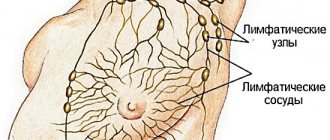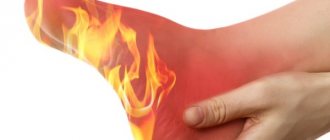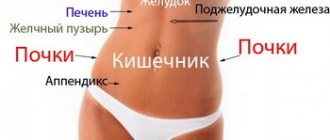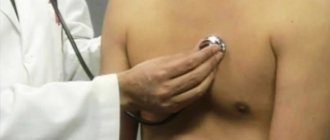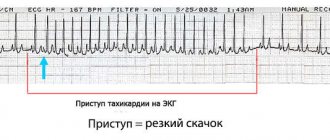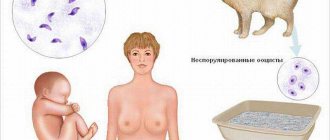Physiological chest pain
When there is a burning sensation in the chest area, this is always a cause for concern, especially since, due to the anatomical location, the resulting pain is most often associated with cardiac pathologies. The absence of gender and age contributes to panic: a burning sensation in the chest can occur at any age. But you can distinguish cardiac discomfort from any other based on several reliable criteria:
- unpleasant sensations associated with the heart are stable and do not depend on body position;
- they are not correlated with the depth of inspiration or time of day;
- palpation of the sternum does not affect them;
- Nitroglycerin relieves the severity of symptoms, but painkillers are useless.
This is not an absolute truth, since there are exceptions to every rule. A burning sensation in the heart area can be provoked by other reasons, which only a doctor can say after a full clinical and laboratory examination. However, it is reliably known that the heart begins to burn after overeating harmful, overly spicy food, when the contents of the stomach are retrogradely thrown into the esophagus, causing severe pain in the chest. In addition, if gluttony precedes sleep, a person experiences:
- cough;
- nausea;
- bloating;
- dyspnea.
Smoking or drinking alcohol can cause the same reaction. But such discomfort is physiological. A balanced diet will alleviate the situation. If the heart burns often, but there are no visible reasons for this, then the problem becomes dangerous.
Accompanied by belching
A burning sensation in the middle of the sternum (the causes depend on the composition of the food and the state of the gastrointestinal tract) can occur at the time of pathological belching.
Diseases that may be accompanied by belching and pain:
- Gastro-food reflux: the food bolus moves through the gastrointestinal tract in the opposite direction, from the stomach it returns back to the esophagus. The pain begins as a result of insufficiency of the esophageal sphincter and is accompanied by cough, hoarseness, and damage to tooth enamel.
- Achalasia cardia: pain during belching is accompanied by a violation of the swallowing reflex.
- Esophageal hernia in the diaphragm area: this disease can only be detected by X-ray examination.
Burning pain during belching is caused by diseases of the digestive system and some pathologies of the respiratory system.
When the burning pain becomes dangerous
There are many pathological causes of burning in the chest. For example, neurosis, depression, respiratory disease, somatic pathologies. Each of them requires a special approach.
Pain and burning in the chest on the right
If there is a burning sensation in the chest on the right, then the following diseases make themselves felt:
Liver, biliary tract, biliary system
The unpleasant sensations are dull, occur in attacks, are not associated with movement, radiate under the shoulder blade, right arm, right half of the neck, intensify when eating, there is a yellowish coating on the tongue, bitterness in the mouth.
A stone or tumor of the biliary system causes a violation of the outflow of bile with jaundice, the feces become lighter, and the urine becomes darker.
Digestive system diseases
These can be: ulcers, gastritis, intestinal colic, which manifest themselves as pain on the right side quite rarely, but are always associated with food intake.
Intercostal neuralgia
In essence, this is a reaction of the intercostal nerves to their compression by inflammation or pinching, for example, with herpes, chickenpox, shingles.
A strong burning sensation occurs somewhere in the region of the heart, but it is strictly localized and can be felt. The pain intensifies with any movement, inhalation, coughing.
Osteochondrosis also shows lumbago in the right arm and the right half of the neck.
PMS
It burns in the area of the heart and with engorgement of the mammary glands before menstruation, but not everyone knows that this is a sign of mastopathy.
A distinctive feature is the obvious connection with the female cycle, the formation of several nodules in the gland.
Pneumonia
Right-sided pneumonia with pleural effusion is accompanied by a burning sensation in the chest, and specific symptoms of pneumonia are required:
- weakness;
- hyperthermia;
- cough;
- lack of appetite;
- symptoms of intoxication.
Just before the heart starts to beat, shortness of breath appears.
Scoliosis
Thoracic scoliosis is extremely rare, but if it develops, it has a C or S-shaped configuration, with its convexity facing to the right.
Any involvement of the intercostal nerves results in clearly localized pain, with symptoms of intoxication, aggravated by coughing and breathing (no cough!).
Intercostal myositis
Inflammation of the intercostal muscles also has a clear localization; at rest the person does not experience any unpleasant sensations, but when moving, coughing, or inhaling, a burning sensation appears in the chest.
Cardioneurosis, other diseases of the nervous system
Cardioneurosis imitates serious cardiac pathologies in terms of the type of pain and its intensity, while it does not have objective confirmation of organic damage to the heart, and is relieved by treatment of neurological pathology.
A burning sensation in the heart area can be a symptom of VSD with changes in blood pressure, heart rhythm disturbances, intolerance to stuffy rooms, and migraines.
Psychosomatics
The main manifestation is pathological shortness of breath, in the absence of fever, cough, or connection with breathing or eating.
Itching may occur; the cause is severe emotional shock. A complete examination does not reveal somatic organic matter. Consultation with a psychiatrist is required.
Endocrinological problems
Most often, retrosternal discomfort accompanies hyperthyroidism, then it is combined with shortness of breath, irritability, decreased libido in men and women, and hot flashes. Similar symptoms occur during menopause.
Burning on the left side in the heart area or in the center of the sternum
The internal organs located on the left and center of the sternum are innervated by the same nerves, so the causes of cardiac burning are common here.
Respiratory system diseases: pneumonia, bronchitis, flu, accompanied by cough
It is the cough that causes chest discomfort:
- with pneumonia with pleural effusion, the localization of pain is on the left, but not exactly behind the sternum, and at the level of 3-5 intercostal spaces, it intensifies with breathing, is accompanied by weakness, fever, and sometimes dyspepsia;
- tuberculosis has similar manifestations;
- bronchitis gives a burning sensation in the chest just behind the sternum, in the center, where the trachea and bronchi are located, there is a fever, there is no appetite;
- influenza is a vasculitis, the basis of a retrosternal burning sensation is hemorrhagic permeation of the tracheal mucosa, it is also manifested by fever, arthralgia, and runny nose.
Overwork
Unpleasant sensations in the chest are a sign of VSD, especially hot flashes, frequent mood swings, but a complete absence of symptoms of intoxication and colds.
Physical hyperstress
Pain on the left side during overtraining or physical hyperstress is a symptom of cardiac pathology or physiological overstrain of the myocardium.
Acute pathologies: angina pectoris, heart attack, myocarditis
There are several of them:
- angina pectoris - pain radiates to the left up to the little finger, dull in nature, intensifies with exertion, excitement, goes away after rest, relieved with Nitroglycerin;
- myocardial infarction is preceded by angina pectoris, the pain is sharp, not relieved by rest, nitrates, radiates to the left arm, shoulder blade, jaw, often cold sweat, heart rhythm disturbances, dizziness, shortness of breath;
- myocarditis is a consequence of inflammation, intoxication, characterized by shortness of breath, cardiac discomfort, and edema.
Other reasons for burning in the chest area
There are several of them, including those that are significant for the patient’s life.
Eating process
This is how the heart burns with esophagitis, foreign bodies in the esophagus, esophageal cancer, gastritis, peptic ulcer, pancreatitis, intestinal colic, diaphragmatic hernia. Each disease has its own symptoms, but is always associated with eating and swallowing.
Horizontal position
This is gastroesophageal reflux, heartburn when food refluxes into the esophagus from the stomach.
Breathing: pericarditis, pleurisy, herpetic lesions of the upper respiratory tract
The essence is the contact of the organ shell with the inside of the ribs, which causes the presence of air or effusion during inflammation. There is always shortness of breath and symptoms of respiratory failure.
TELA
Severe chest pain with rusty sputum, shortness of breath, not relieved by Nitroglycerin, the cause is thrombosis due to a violation of the blood clotting system.
Rheumatism, trauma, osteochondrosis
Here a person encounters referred pain, that is, radiating from the affected joints, injured ribs or sternum, or spine.
Idiopathic burning sensation behind the sternum
This is pain behind the sternum or on the left side of the chest, which is not associated with anything.
Mitral valve prolapse, atrial fibrillation
Substernal discomfort may be one of the symptoms of these diseases; the sensations are erased and unrelated to anything: MA is life-threatening.
Pathology of the great vessels: aorta, pulmonary artery
Dissection or rupture of an aortic aneurysm is characterized by severe chest pain with a shift to the left and requires emergency care.
Mediastinal tumors
The burning is dull, increasing, uncontrollable.
Mammary cancer
Gives retrosternal pain with metastases in the mediastinum (the gland itself is changed)
Osteochondrosis
Disease of the musculoskeletal system. The essence is the destruction of spinal tissue. This is a slow degenerative process that is accompanied by pressure and burning in the chest, especially if the neck or the same segment of the spinal column is affected.
The treatment is quite difficult and lengthy. Anti-inflammatory, glucocorticoids, and chondroprotectors are needed.
The question of which drugs to use should be addressed to an orthopedic doctor and a neurologist, if he is involved in the correction.
Burning sensation in the chest during pregnancy
Substernal discomfort during pregnancy has its own characteristics:
- the growing fetus puts pressure on the diaphragm and chest, which causes discomfort even at rest;
- a stressful situation associated with pregnancy provokes discomfort in the heart area;
- enlargement of the mammary glands makes breathing difficult and can cause chest pain;
- expansion of the thoracic region associated with stress during gestation causes shortness of breath and discomfort in the heart area.
All this requires constant monitoring by a doctor.
On the right side
Burning pain on the right side of the chest may indicate:
- about the presence of inflammatory processes in the stomach;
- about disorders of the liver and gall bladder;
- about injuries to the musculoskeletal system on the right side;
- about intercostal neuralgia on the right;
- about the imminent beginning of critical days;
- about heartburn;
Pain on the right side tells the specialist about a disorder of the gastrointestinal tract, musculoskeletal system, and the functional characteristics of the female body.
What to do when there is a “burning behind the sternum”
Since there are many reasons that cause a burning sensation in the chest, the elimination of each of them is individual. The doctor must do this. But there are situations when self-help is necessary.
The rules are simple, but they are correlated with the localization and nature of the unpleasant sensations:
- a burning sensation on the left behind the sternum suggests a search for a comfortable position, rest, a Nitrong tablet under the tongue. Sharp pain is a reason to call an ambulance;
- cough with chest discomfort requires an x-ray of the lungs and consultation with a pulmonologist;
- asthenia after an infection or a serious illness with pain in the heart makes it mandatory to visit a cardiologist;
- burning behind the sternum when walking is a sign of osteochondrosis, a reason to contact a chiropractor;
- if your heart begins to heat while eating - a sign of esophagitis or gastritis, you need to visit a gastroenterologist (a weak solution of baking soda will quickly relieve the pain);
- tachycardia with chest pain is a symptom of VSD, you need to consult a specialist on a healthy lifestyle;
- itchy sternum is a symptom of allergies;
- sudden coughing movements - bronchial asthma at the beginning of an attack.
Typically, such phenomena occur periodically, so patients already have a drug therapy regimen that can stop the attack.
Who treats pathology
A burning sensation in the middle of the sternum (the reasons may be different) manifests itself in pathologies of the cardiovascular, respiratory or digestive systems. If you have this symptom, you should urgently contact your local physician, who, based on the medical history and test results, will refer the patient to a more specialized specialist.
Gastroenterologists, TB specialists, cardiologists and others often encounter the problem of burning chest pain.
The pain can be concentrated on the right and left sides, above or below, as well as in the center of the chest.
The specialist must be able to establish the nature, intensity and duration of the pain syndrome to determine a possible disease. To do this, the doctor collects an anamnesis of life and previous diseases, clarifies the conditions and place of residence and work, the presence of hereditary pathologies and bad habits.
Principles of therapy correlated with pain location
To relieve the burning behind the sternum, you need to cure the root cause. Then the burning sensation will not bother you:
- coronary heart disease, angina pectoris requires normalization of blood cholesterol levels, drugs that improve heart function;
- neuroses – sedative therapy;
- hyperthyroidism – normalization of thyroid function;
In order to adequately treat a patient, an accurate diagnosis is needed, which is sometimes made by a whole council of doctors (the nature of the burning sensations and their localization are so diverse). It is considered that if:
- pain on the left or in the middle of the chest - this is the heart “saying”, you need to stop, rest, take Nitroglycerin, open a window for air flow, with repeated attacks - a visit to a cardiologist is required;
- if the burning sensation is diffuse, it is difficult to breathe, call an ambulance immediately, and before it arrives, take a couple of aspirin tablets to prevent a heart attack;
- if the mammary gland hurts, it is associated with menstruation, accompanied by discharge from the nipples - you need to consult a mammologist so as not to miss mastopathy with transformation into cancer;
- a cough always suggests an x-ray examination of the chest organs; what to do next is decided by the doctor;
- a long period of recovery after a serious somatic illness with periodic burning in the chest requires an appointment with a cardiologist, a complete cardiological examination (perhaps we are talking about decompensation of the cardiovascular system);
- a sudden, intense, chest-expanding burning sensation suggests calling an ambulance (suspicion of aortic dissection).
No matter how the situation develops, taking analgesics is prohibited until the doctor arrives.
Accompanied by cough
Pain during coughing can be observed:
- For severe diseases of the respiratory system.
These include:
- tuberculosis;
- pneumonia;
- acute bronchitis;
- chronic obstructive pulmonary disease (COPD);
- pleurisy;
- For mechanical, chemical and physical injuries of the chest organs.
- For heart diseases during relapse.
Pain during coughing, in the absence of contraindications, can be eliminated with the help of analgesics.
Prevention
The rules are well known:
- sanitation of all foci of chronic infection in the body;
- strictly dosed physical activity agreed with the doctor;
- balanced diet;
- strong, full, eight-hour sleep, no stress;
- year-round intake of vitamin and mineral complexes in addition to fresh vegetables and fruits;
- clinical examination.
Compliance with these recommendations is a guarantee of your active longevity.
Diagnostic measures
Burning pain is characteristic of many diseases of different body systems. To clarify its location and type of pathology, the doctor prescribes various diagnostic methods to the patient.
These include:
- ECG: to exclude the risk of cardiovascular diseases;
- assessment of cardiovascular risk: taking into account the gender, age, blood pressure and heredity of the patient, as well as the level of cholesterol and glucose in the blood;
- Ultrasound: specialists check the abdominal organs and heart;
- X-ray examination of the respiratory and cardiovascular systems;
- general and biochemical blood test: detect the presence of inflammatory processes in the body;
- Analysis of urine.
If necessary, the doctor may prescribe additional research methods to clarify the nature of the disease (MRI, CT, bronchoscopy and others).
Literature
- "Emergency Medical Care", ed. J.E. Tintinally, Rl. Kroma, E. Ruiz, Translation from English by Dr. med. Sciences V.I. Kandrora, MD M.V. Neverova, Dr. med. Sciences A.V. Suchkova, Ph.D. A.V. Nizovoy, Yu.L. Amchenkova; edited by Doctor of Medical Sciences V.T. Ivashkina, Doctor of Medical Sciences P.G. Bryusova; Moscow "Medicine" 2001.
- Polyclinic therapy. Textbook (edited by G.I. Storozhakov, I.I. Chukaev and others, 2009).
- Asadullin A.R., Yuldashev V.L., Asadullina G.M. and others. Efficacy and safety of using the drug alimemazine (Teraligen) for the relief of anxiety in patients with alcohol dependence syndrome // Journal of Neurology and Psychiatry named after. S.S. Korsakov. 2018
- Van Beek MH, Oude Voshaar RC, Beek AM et al. A brief cognitive-behavioral intervention for treating depression and panic disorder in patients with noncardiac chest pain: a 24-week randomized controlled trial // Depress Anxiety. 2013
Treatment
A burning sensation in the middle of the sternum (the reasons are determined by a specialist) causes discomfort to the patient and requires immediate medical attention.
To prescribe the correct treatment you need:
- identify the system in which violations occurred;
- find the affected organ;
- understand the causes and mechanism of the pathological process;
- prescribe medications or (if necessary) surgical treatment.
Drugs are prescribed depending on the nature of the affected system:
1. For musculoskeletal injuries:
- the doctor prescribes tablets and ointments with an analgesic effect; injections can be used to relieve attacks;
- Examples of drugs: Ibuprofen, Indomethacin.
- Ibuprofen: a drug with an anti-inflammatory effect, prescribed in 100 ml suspensions. Take 20 ml 2 times a day after meals. Contraindicated for diseases of the digestive system.
- Indomethacin: an antipyretic drug, prescribed in tablets. Take 1 tablet 2-3 times a day. The drug is contraindicated in diseases of the digestive system.
2. For disorders of the cardiovascular system and respiratory system:
- the doctor prescribes analgesics, non-steroidal drugs to relieve attacks, examples of drugs: Aspirin, Ketoprofen;
- Aspirin: a powerful analgesic, prescribed in effervescent tablets. Take 2 tablets orally after meals up to 3 times a day. Contraindicated for diseases of the digestive system.
- Ketoprofen: a drug with anti-inflammatory and analgesic effects, prescribed in the form of a 50 mg solution. Take 100 mg intramuscularly 2 times a day.
For gastrointestinal pain, it is better for patients not to take antispasmodics on their own, as this may make it difficult to find the location of the pain.
Before using any drug, you should consult your doctor.
There are many reasons for a burning sensation in the middle of the sternum. If you experience this symptom, you should immediately consult a general practitioner. The therapist, based on the medical history and research results, will refer the patient to a more specialized specialist for further diagnosis and treatment.
Article design: Mila Friedan

